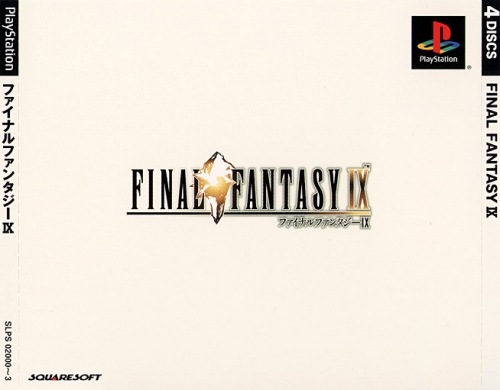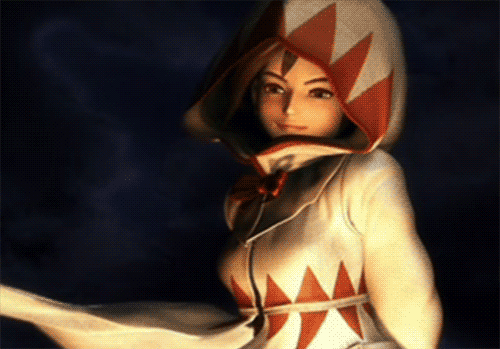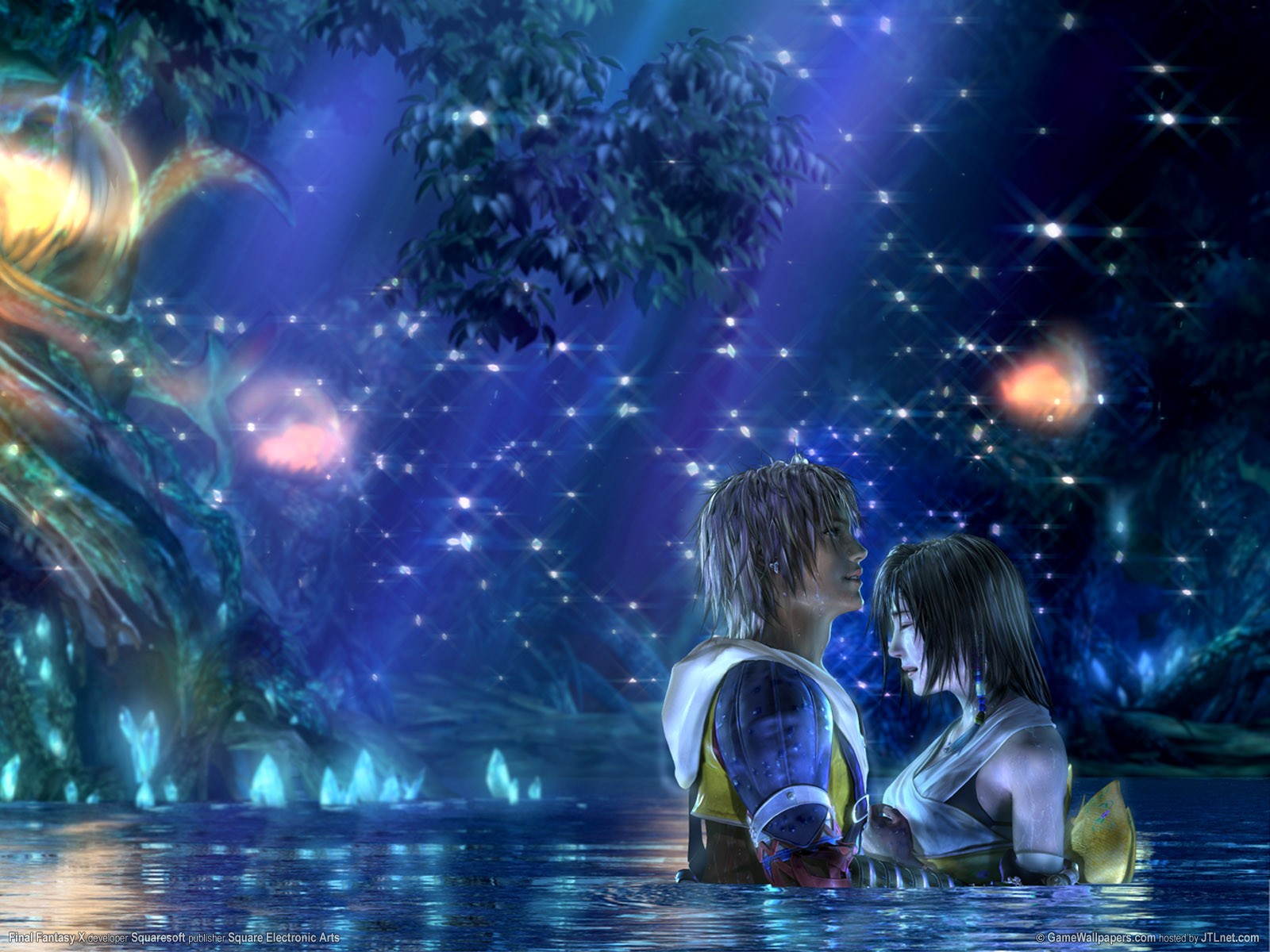Ohhh the Playstation years. Good stuff.
Final Fantasy Retrospective: The PlayStation Years
Final Fantasy leaves Nintendo and goes 3D
Final Fantasy IX: The Band Gets Back Together for One Last Performance


Final Fantasy VII and VIII had introduced millions of new players to the role playing genre, and had become a brand leader for the PlayStation. As the era of the PSX began to wane, Hironobu Sakaguchi wanted to create a Final Fantasy game that would return to the roots of the series. While the game that would eventually be called Final Fantasy IX began development before VIII was even complete, the game was initially planned as an offshoot to the series. There was concern within Square that a more traditional Final Fantasy game might alienate players that had cut their teeth on the PlayStation games.
For the first time since the Super Nintendo days, the original creative team behind Final Fantasy was back together. Hironobu Sakaguchi was once again a creative lead on the series, crafting the story for the game. Yoshitaka Amano provided character designs that were infused with mirth and whimsy, and a far cry from the work that Tetsuya Nomura had been providing for the company on the PlayStation. Nobuo Uematsu composed his most ambitious score yet, writing over 130 music tracks. In keeping with the notion of a look back on the history of the Final Fantasy games, Uematsu’s score revisited some of the classic themes from the series. Hiroyuki Ito sat in the director’s chair for the first time, but the father of the Active Time Battle system and many other core game mechanics of the series was also a Final Fantasy veteran. Eventually, the game that this “old guard” was creating was considered enough of a core Final Fantasy experience to be given the number IX in its title.
Considering the people responsible for the game, and the desire of Sakaguchi to close out the PlayStation era with a look back on the franchise, everything about Final Fantasy IX was a celebration of the series up to this point. This was immediately apparent with the style of the game. Not only was the world of Final Fantasy IX firmly rooted in a medieval fantasy aesthetic, but the characters themselves once again adopted a “super deformed” look. The cast of Final Fantasy IX sported big heads, large hands and feet, and expressive faces that brought back memories of the emotive sprites from Final Fantasy VI.

The less realistic and lower polygon count character models allowed for a return to another classic element of the franchise: four-member parties. In a battle system that was instantly recognizable to the SNES games, Final Fantasy IX used the Active Time Battle system to full effect. The characters each represented a classic “job” from the series: Zidane was a thief, Vivi a black mage, Freya a dragoon, and so on. While the cast of FF VII and VIII were largely blank slates that could learn abilities, the characters in IX each had traits and skills that were intrinsic to their jobs, making different party combinations a must for success.
It was with these varied abilities that the main new gameplay system was introduced. Characters could equip a wide array of gear, which was another callback to the older games in the series. Different pieces of equipment would come with different active and passive skills that would be automatically available to the party member as long as the item was equipped. Ability Points gained from battles would eventually allow the character to learn the skill permanently, similar to the magicite system in Final Fantasy VI. While learned magic spells and command skills were always available, only a select number of passive traits could be activated at a time, so players could tailor their party for specific encounters.

Story was of course a focal point of the game, and Final Fantasy IX told a tale that was much more grounded than the existential crisis of Final Fantasy VII or the heady love story of VIII. The game was centered on its eclectic cast of characters, with the princess Garnet, her knight bodyguard Steiner, and the aforementioned Zidane and Vivi being the major players in the group. What begins as Zidane’s mission to kidnap the princess escalates into a sprawling adventure that spans two dimensions. Many of the characters have to deal with the fact that their personal reality is not what they thought it was when the game starts. Even as they deal with deep personal issues the team bands together to stop the enigmatic Kuja, backed by the villainous Garland, who longtime fans would remember as the final foe in the first game.

Final Fantasy IX included a special cinematic system that stands unique amongst the series to this day: the Active Time Event system. During specific moments during exploration, players would have the opportunity to take a peek at what the various members of their party were up to. These vignettes were often humorous, and also filled in vital backstory. In some instances the ATE was used to control two parties as they navigated puzzle dungeons, another nod to Final Fantasy VI.
Final Fantasy IX was released July 7, 2000 in Japan. Reviewers praised the traditional gameplay, vibrant setting, and musical score. To this day, Final Fantasy IX is the top rated game in the series on Metacritic, sitting with an overall score of 94.
The game was released in America the same year on November 14. Unfortunately, the fears that people within Square had about the game proved to be accurate, as it just didn’t resonate with the newfound Final Fantasy audience in America. Players that had cut their teeth on Final Fantasy VII decried the “cartoony” aesthetic of the game, insisting that it wasn’t a Final Fantasy game. Players that remembered the NES and SNES days were pleased with the back to basics approach, but they were the vast minority, as Final Fantasy IX was nowhere near the sales success of the previous two games. The U.S. marketing campaign touting that “The Crystals have returned” was lost on most gamers, and FF IX has since become merely a footnote in the history of the series for many people.

Though no one knew it at the time, Final Fantasy IX was to be the swan song for Sakaguchi, Amano, and Uematsu. Though the three of them would be involved with the series for a little longer, this would be the last time the three of them were the creative leads on the franchise.
Join us next time as we take a look at Final Fantasy as the series learns to talk and goes online when we discuss the PlayStation 2 years!




Comments